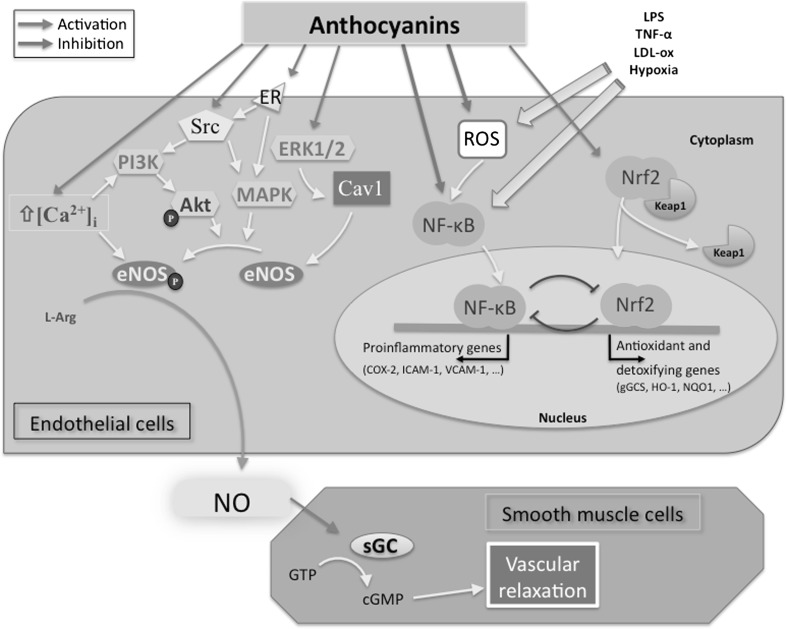Fig. 2.
Effects of AC in vascular endothelium. Anthocyanins are potent inducers of the endothelial formation of NO involving different intracellular signaling pathways. Furthermore, AC are able to modulate pro-inflammatory pathway by inhibiting ROS and the redox-sensitive transcription factor NF-κB. Indirect mechanisms involved in ROS scavenging ability of AC could be also linked to acute activation of antioxidant and detoxifying enzymes modulated by Nrf2 transcription factor. ROS reactive oxygen species, PI3K phosphatidylinositol 3-kinase, MAPK mitogen-activated protein kinases, ERK1/2 extracellular regulated kinase 1 and 2, Akt protein kinase B, LDL-ox oxidized low density lipoprotein, TNF-a tumor necrosis factor a, eNOS endothelial NO synthase, NO nitric oxide, ER estrogen receptor, Cav-1 caveolin-1, sGC soluble guanylyl cyclase, GTP guanosine-5′-triphosphate, cGMP cyclic guanosine monophosphate, NQO1 NAD(P)H:quinone oxidoreductase-1, HO-1 heme oxygenase-1, KEAP1 kelch-like-ECH-associated protein 1, Nrf2 nuclear factor erythroid-2 (NF-E2)-related factor 2

